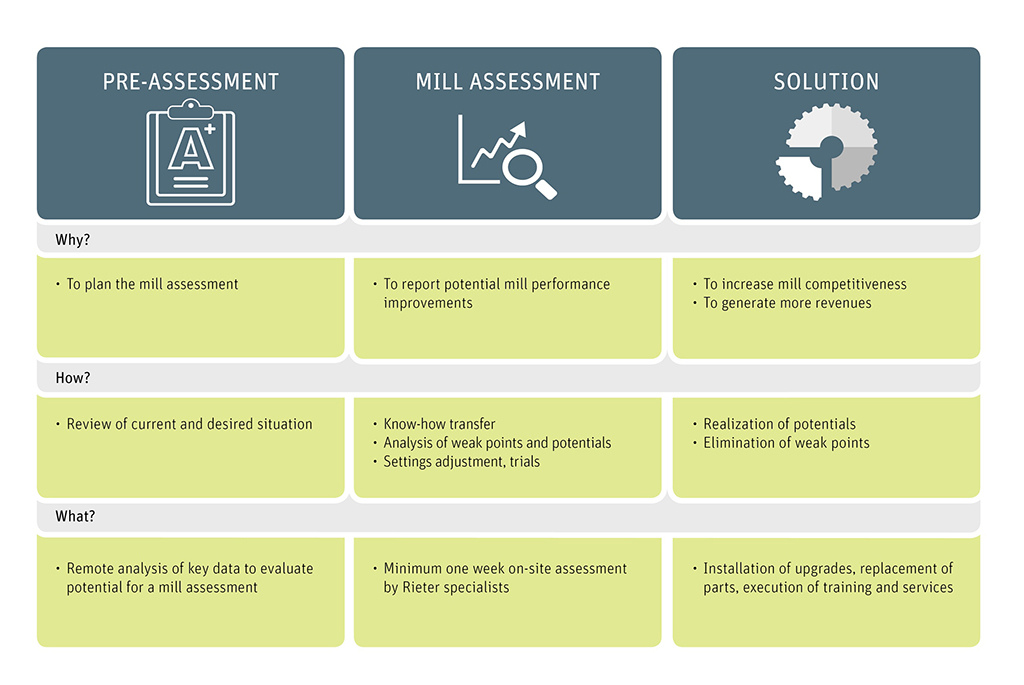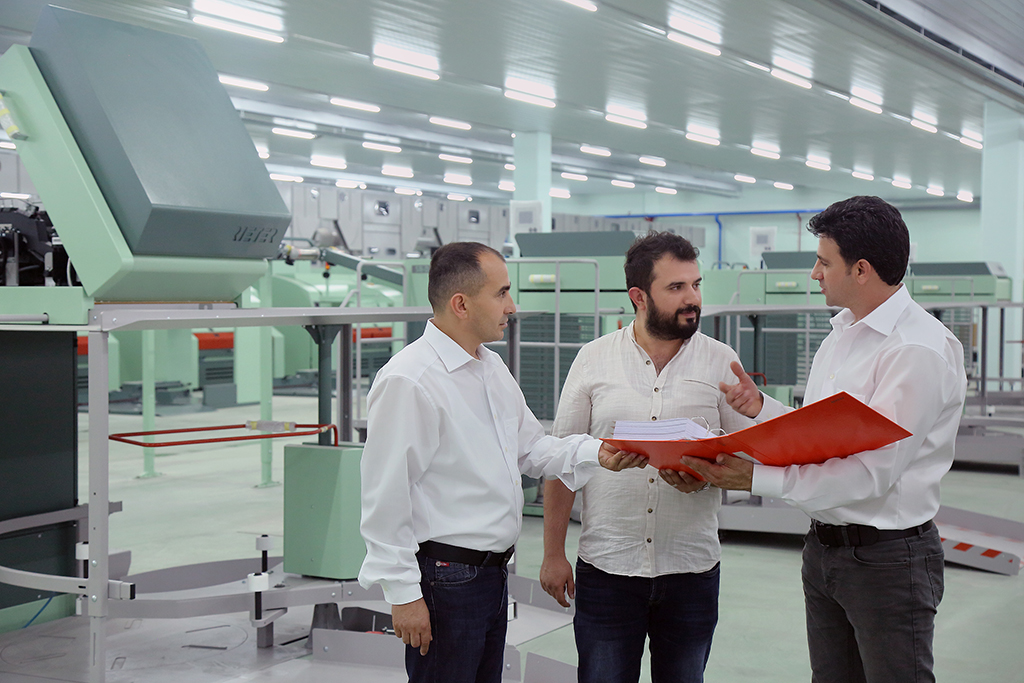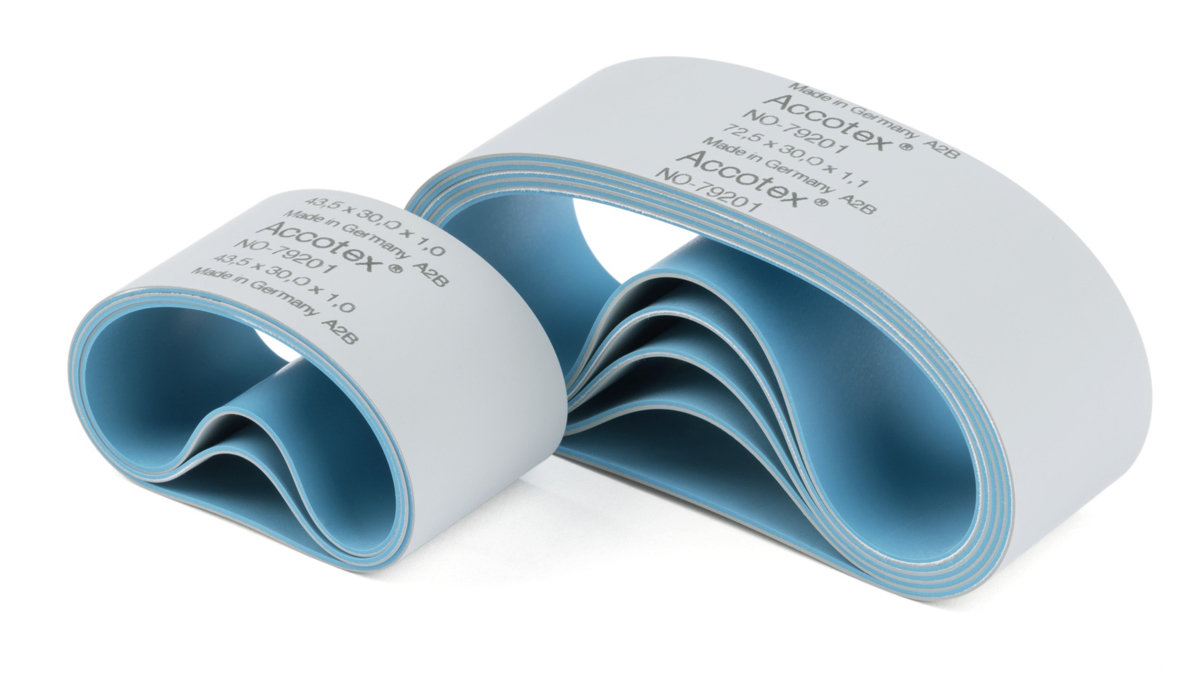Spinning mill owners face ever new challenges in today’s uncertain environment. Rieter’s Performance Optimization Services (POS) can help address these successfully through tailored recommendations and consultancy services. Here is how POS provided one Rieter customer with a concept to improve productivity by 15% while enhancing both yarn quality and output – thereby enabling him to seize a critical market opportunity.

Fig 1: The three-step approach of Rieter Performance Optimization Services helps to capture market opportunities
It takes a strong entrepreneurial skill set to succeed in the competitive environment of yarn manufacturing in any year. But even for tried and tested entrepreneurs, 2020 brought on a whole new set of challenges from looking after the health of their employees through to keeping their businesses afloat amid unprecedented uncertainty.
So when one of Rieter’s customers – an owner of a ring and compact-spinning mill – was suddenly confronted with a market opportunity in the second half of 2020, there was too much at stake to miss it. As markets rapidly recovered yarn prices increased in line with the demand for high-quality yarns. The customer’s initial response was to reduce machine speed to improve yarn quality. This was hardly satisfactory, however, as it resulted in lower production output. He turned to Rieter to help him meet the challenge.
This is where Rieter brought in its Performance Optimization Services (POS). POS aims to maintain the competitiveness of spinning mills in terms of productivity, conversion cost and quality over the lifetime of the machines. This requires compensation for technical wear and tear as well as ensuring that the gap between the existing mill’s performance and that of new spinning mills is kept as low as possible. “Rieter’s POS service concept addresses both of these points,” explains Rasmus Egge, Head Performance Optimization Services, adding: “The concept is tailored to meet individual customer needs and follows a three-step optimization approach: Pre-Assessment, Mill Assessment and Solution” (Fig. 1).
During the Pre-Assessment, the POS team, which is entirely made up of yarn technology experts, records the customer’s desired improvements and creates an overview of the current situation through remote analysis. The Rieter machines installed at the site are reviewed and the customer’s areas of concern are discussed. Through these measures, the Pre-Assessment defines the goals and focus areas for the next steps. For the customer in question, the request was to provide support in sustainably enhancing yarn quality while maintaining production output at constant levels.

Fig. 2: Rieter’s POS team sharing findings with the customer during the Mill Assessment
During the Mill Assessment, Rieter experts from the field service and textile technology departments visit the spinning mill. The team assesses the current performance of the spinning mill, conducts tests and provides advice on adjusting machine settings. The aim is to optimize the entire Rieter spinning process so that customers can realize the system’s full performance potential. In this case, the POS team conducted a thorough analysis of the entire spinning mill and optimized various machine settings. Travelling was difficult given the pandemic so a lot of the research happened remotely. Rieter’s POS team made it a priority to understand the root causes that were affecting the nep count – a key metric for quality – and productivity. During this period a constant exchange between the Rieter team and the customer is crucial. (Fig. 2).
Based on the findings, Rieter’s POS team recommended a series of measures which included for instance replacing technology components and upgrading the licker-in of the card. This is the third step of the POS concept which is tailored to precisely meet the customer’s needs and improve the performance of the mill. The combination of measures is based on the desired improvements defined during the Pre-Assessment phase as well as the findings during the Mill Assessment. In addition to replacing machine parts and installing upgrades as was the case for this customer, the solution can sometimes extend to staff training and providing textile technology services.
For this customer the recommendations included measures that would ultimately increase productivity by up to 15% while maintaining consistent yarn quality. Furthermore, the card production increased by 20% while the nep count for compact yarn with a yarn count of Ne 40 was reduced by 60%.




